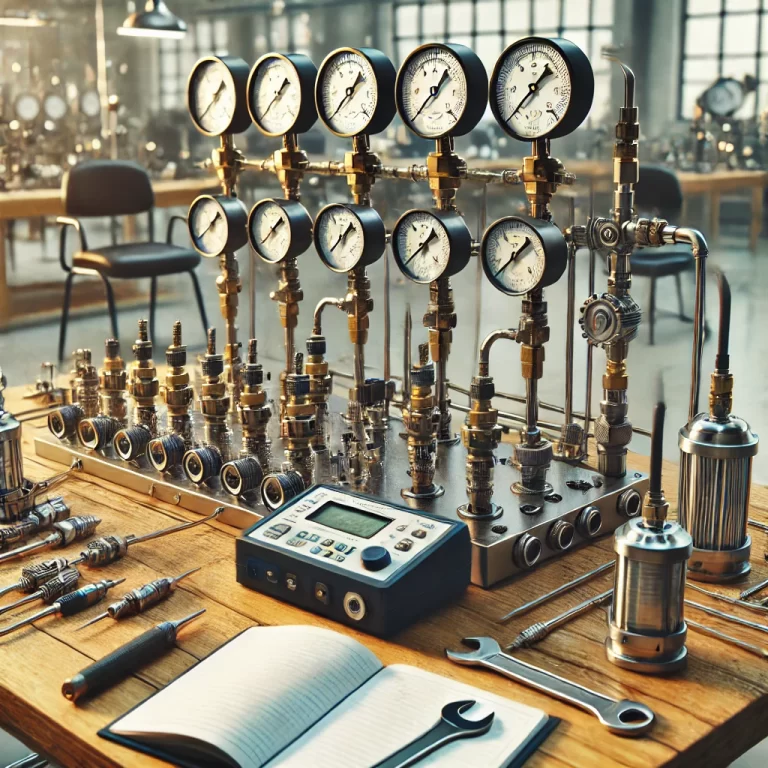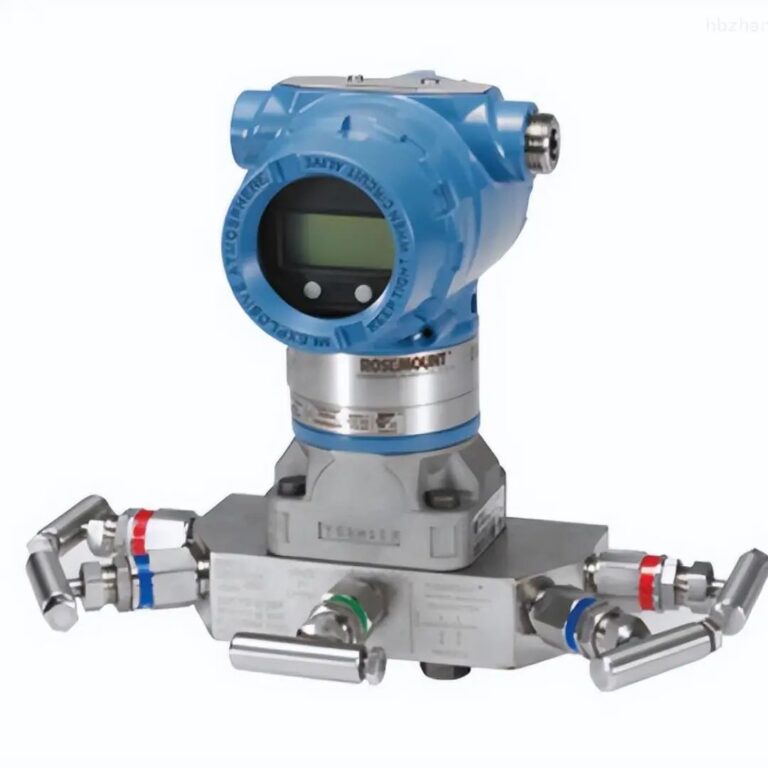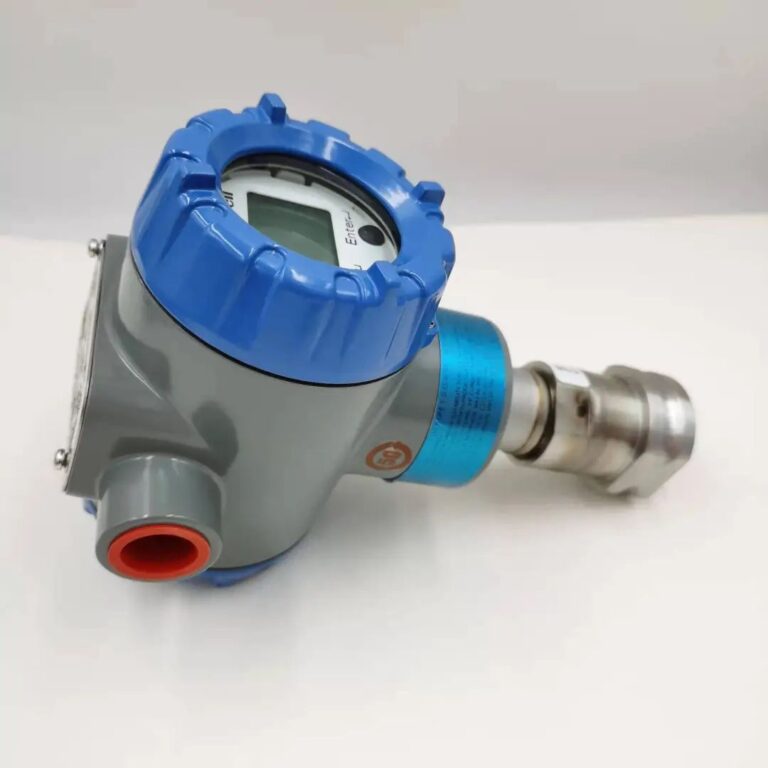In our world, pressure is ever-present, and differential pressure sensors act like silent “watchdogs,” constantly monitoring pressure differences in various systems. From industrial production to daily life, these sensors are omnipresent, providing crucial support to ensure smooth operation in countless applications.
1. Working Principle: Unveiling the Secrets of Pressure Difference Detection
The working principle of a differential pressure sensor is based on various well-known physical effects, such as the piezoresistive effect, capacitive effect, or strain gauge effect. Let’s take the piezoresistive differential pressure sensor as an example. Inside the sensor, there is a pressure-sensitive component, typically made of semiconductor material. When two different pressures are applied to either side of this component, it experiences varying “forces,” causing stress on the material. This stress alters the resistance of the semiconductor material, and there is a specific relationship between the change in resistance and the pressure difference.
Through a precise circuit, this change in resistance is measured and converted into an electrical signal that we can read. This allows us to accurately detect the pressure difference.

2. Core Characteristics: Reliable, Sensitive, and Practical
Ultra-High Sensitivity and Accuracy
Differential pressure sensors act like keen “sentinels,” highly sensitive to changes in pressure difference. In environments requiring extremely high precision, such as in the fuel injection systems of aircraft engines, these sensors can detect pressure differences as small as 0.1 kPa. Such accuracy is critical for ensuring optimal engine performance, as even the smallest fluctuation in pressure could significantly impact engine efficiency. Similarly, in the medical field, devices like dialysis machines rely on precise pressure monitoring between dialysis fluid and blood to ensure treatment safety, with errors kept within ±0.5% FS (Full Scale).Stability and Reliability
After extensive design and rigorous testing, differential pressure sensors are known for their exceptional stability and reliability. Whether in harsh industrial environments with high temperatures, pressures, and corrosive substances, or in fields requiring utmost stability, such as medical and aerospace sectors, these sensors perform consistently. For example, in a petrochemical plant, the sensor monitors the pressure difference across various points of a pipeline, where extreme conditions are common. Despite this, the sensor ensures long-term stable performance, providing valuable support for operational safety. In fact, its Mean Time Between Failures (MTBF) can reach tens of thousands of hours, guaranteeing continued equipment reliability.Linearity and Dynamic Range
Within a certain pressure range, the relationship between the output signal of the sensor and the pressure difference is linear. This makes data processing and analysis simple, as the signal output changes proportionally to the pressure difference. This feature enhances the efficiency of control systems, which rely on this linear signal to assess pressure changes accurately, enabling precise control. The sensor can handle a broad dynamic range, allowing it to measure both small pressure differences, such as those in air purification devices, and larger differences in industrial ventilation systems.Response Time and Frequency Response
Differential pressure sensors respond very quickly to changes in pressure difference, typically within tens of milliseconds. This quick reaction allows them to monitor real-time fluctuations, providing up-to-date information to control systems. In specialized scenarios, like sudden pressure changes in hydraulic systems, these sensors can also maintain good low-frequency response, accurately capturing dynamic pressure differences and ensuring stability in complex systems.Power Consumption and Cost
With the advancement of technology, modern differential pressure sensors are increasingly energy-efficient. By using low-power electronic components and advanced circuit designs, these sensors consume very little energy during prolonged operation. This is particularly beneficial for battery-powered devices or distributed monitoring systems that require multiple sensor nodes, significantly extending operational lifespans and reducing maintenance costs. In terms of cost, due to mass production and improved technology, the manufacturing cost of differential pressure sensors has decreased, offering a high cost-to-performance ratio. For instance, in smart home systems, low-power, low-cost differential pressure sensors help automate ventilation control based on pressure differences, improving indoor air quality.

3. Applications: Reliable Assistants in Our Daily Lives
Industrial Automation
In industrial automation, differential pressure sensors play a vital role. In chemical production, they monitor the pressure difference between the inlet and outlet of reaction vessels, ensuring that materials are transported smoothly and chemical reactions proceed as planned. In pharmaceutical production, they help monitor the pressure difference in clean rooms, ensuring that airflow and cleanliness meet required standards. In wastewater treatment plants, they track pressure differences across filters, alerting operators when to replace filters. Furthermore, in automotive part production lines, they test product airtightness, ensuring higher product quality.HVAC Systems
Differential pressure sensors are also essential in heating, ventilation, and air conditioning (HVAC) systems. In air conditioning systems, they monitor the pressure difference across filters, signaling when a filter is clogged and needs replacement, ensuring consistent airflow and air quality. In new ventilation systems, these sensors monitor indoor and outdoor air pressure differences, adjusting ventilation rates to maintain fresh indoor air. In heating systems, they track pressure differences across heating pipes, ensuring optimal circulation and efficient heating. In large commercial buildings and industrial plants, differential pressure sensors help enhance energy efficiency and reduce operational costs.Automotive Applications
In the automotive industry, differential pressure sensors are widely used. In engine intake systems, they monitor pressure differences across air filters to detect blockages, ensuring the engine receives sufficient air for combustion, which improves fuel efficiency. In braking systems, the sensor monitors pressure differences in brake lines to ensure proper brake function, contributing to vehicle safety. In automatic transmissions, the sensor monitors oil pressure differences, enabling precise control over gear shifting, improving overall driving comfort and reliability. In electric vehicles, these sensors also help monitor pressure differences within battery packs, ensuring balanced charging and discharging.Medical Devices
Differential pressure sensors play an equally crucial role in medical devices. In ventilators, they monitor airway pressure differences and automatically adjust settings based on the patient’s condition to ensure smooth airflow, optimizing treatment. In dialysis machines, they measure the pressure difference between dialysis fluid and blood, ensuring the procedure remains safe. In anesthesia machines, they monitor the pressure difference of anesthetic gases, controlling gas flow to ensure a smooth operation. Additionally, wearable medical devices, such as smart blood pressure monitors, use differential pressure sensors to measure pulse-induced pressure differences, enabling non-invasive blood pressure monitoring.

4. Technological Trends: The Infinite Potential of the Future
Smart Integration
With the rapid advancement of artificial intelligence (AI) and the Internet of Things (IoT), differential pressure sensors are moving towards greater intelligence. Future sensors may come equipped with smart chips, enabling them to process and analyze data internally. Not only will they measure pressure differences, but they will also analyze trends and provide predictive alerts. For example, in a smart factory, managers could remotely monitor pressure data through smartphones or computers, and the system would automatically raise alerts and suggest actions when abnormal pressure differences are detected, preventing potential production accidents.Miniaturization and Integration
To meet the demands for miniaturized and multifunctional electronic devices, differential pressure sensors are also advancing towards miniaturization and integration. With MEMS (Microelectromechanical Systems) technology, they can integrate pressure-sensitive components, signal processing circuits, and microprocessors into a single, compact chip. This miniaturization not only facilitates installation in small devices but also reduces power consumption while enhancing overall performance. Additionally, these sensors may be combined with other sensors or modules to create multifunctional components, offering more comprehensive data monitoring for smart homes and smart buildings.Multi-Parameter Fusion
In the future, differential pressure sensors will not be limited to measuring pressure differences. They will likely evolve to monitor multiple parameters simultaneously. For instance, in environmental monitoring, a single sensor could detect pressure differences, temperature, and gas concentrations, providing a more holistic view of environmental conditions. In industrial settings, these sensors could track pressure differences, flow rates, vibrations, and other parameters, detecting potential equipment failures early and optimizing performance.High Precision and Reliability
For high-precision fields such as aerospace, high-end medical equipment, and precision instruments, the accuracy and reliability of differential pressure sensors will continue to improve. New materials, advanced manufacturing techniques, and innovative measurement principles will minimize errors and drift, ensuring sensors perform reliably in extreme conditions like high temperatures, pressures, and radiation.

While differential pressure sensors might seem ordinary at first glance, their impact across various industries is profound. With ongoing technological advancements, their role will expand, offering even greater value in making our lives safer, more efficient, and more convenient. The future of differential pressure sensors holds immense promise as they continue to innovate and contribute to a better world.
